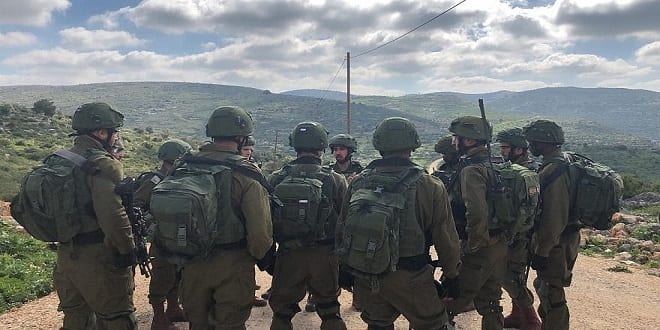Israel’s security forces are in the middle of an intensive manhunt for the Palestinian terrorist who killed an Israeli Defense Forces’ (IDF) soldier and an Israeli civilian in the West Bank outside of Ariel on Sunday, and wounded another soldier before fleeing into a Palestinian village, ditching a stolen vehicle and disappearing.
As time goes by, intelligence will be playing an increasingly crucial role in hunting down the attacker, is from the village of Zawiya, which is near Ariel.
According to defense sources, there is no indication so far that murderer acted as part of a terrorist organization; all signs at this stage suggest at this point that he is a lone attacker.
“We will not leave a stone unturned,” a senior security said on Sunday, hours into the search. Judging by the past record of Israel’s security forces, it’s only a matter of time until they catch up with him.
The attack is a reminder of the constant threat of unorganized terrorism—a threat that has not at all vanished, despite a major drop in such attacks since 2015.
In 2018 alone, Israel’s defense establishment prevented around 400 suspected lone-wolf attacks, due in part to breakthrough technology involving the collection and analysis of big data. Many suspects were arrested, while others received warnings to let them know they are being monitored.
What was once a form of terrorism thought to be almost impossible to prevent became a phenomenon that dropped significantly with time, and Israel has become a world leader in dealing with unorganized terror, which, unlike its organized variant, leaves far fewer clues behind for intelligence agencies to pick up on.
Still, as Sundays attack shows, the calm was always deceptive, and no security net can stop every attack.
Additional catalysts for violence, like the heightened religious tensions around the Temple Mount in recent days, and demonstrations in Gaza, can also serve as triggers for West Bank violence, “activating’ lone-wolf terrorists.
In addition, the Israel Defense Forces must be on high alert to the threat of “copy-cat” terrorism, in which lone attackers receive “inspiration” from previous incidents and try to imitate them.
The second type of terrorism—the organized form, which is tool of choice for Hamas and other armed factions—remains a constant threat, despite the fact that the Shin Bet has become extraordinarily effective in preventing it.
Last year, security forces prevented 480 organized plots, including hundreds of shootings and bombings, some planned for Israeli cities. The IDF and Shin Bet broke up some 220 Hamas cells, according to official Israeli figures, avoiding large-scale death and destruction on Israel’s streets and in the West Bank.
A glance at February’s terrorism figures for the area is also a reminder of the constant level of violence in the West Bank. According to the Shin Bet, last month saw 89 Palestinian attacks in the area, including dozens of fire-bombings and pipe bombs, although this number is down compared to January’s figure of 116 attacks.
For Hamas, the timing of the Ariel terror attack could not be better, and its propaganda branches were quick to seize on the incident.
Hamas is desperate to divert attention to the economic protests that have rocked Gaza in recent days, which have seen Palestinians direct their growing frustration against their own Islamist regime.
Demonstrators protested Gaza’s sky-high unemployment rate, Hamas taxes, the increased cost of living and the more prosperous conditions of Hamas’s senior members in contrast to the dire conditions of many Gazans. Held under the “We want to live” slogan, the demonstrations have quickly spread quickly, to Gaza City, with Hamas police units responding to them brutally, trying to repress them using extreme violence.
Many protesters have been detained, and Hamas accused its arch internal rival, the Palestinian Authority, of being behind the rallies and Gaza’s economic woes due to P.A. sanctions.
Hamas would like nothing more than to set the West Bank on fire, and to burn both the P.A. and Israel with the flames, while dousing the smoking ashes of internal Gazan dissatisfaction, which could yet threaten the regime in the future.
What they don’t want is a repeat of a wave of rallies akin to the “Arab Spring” in 2011, a series of anti-government protests, uprisings and armed rebellions that spread across the Middle East, causing turmoil in country after Arab country.
If Hamas becomes convinced that the protests will escalate into a rebellion, it will not hesitate to use its armed wing to spark an armed conflict with Israel from Gaza, preferring to take the risk of facing Israel’s firepower instead of the wrath of its own people.
Source: Israel in the News

